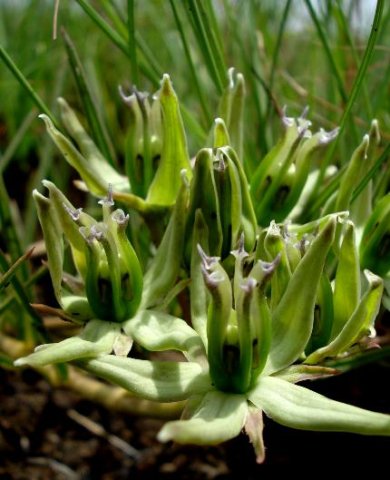Asclepias

Author: Ivan Lätti
Photographer: Judd Kirkel Welwitch
Asclepias is a genus of annual and perennial herbs as well as some shrubs in the Apocynaceae or milkweed family. The plants contain milky sap or latex seen when plant cells are damaged.
The similar genus, Gomphocarpus is distinguished from Asclepias mainly on account of the fibrous rootstocks of the plants instead of deep-seated tubers or woody rootstocks of Asclepias.
The simple, opposite or whorled leaves of Asclepias plants are mostly sessile with entire margins.
The flowers grow in flat-topped umbels, mostly stalked, from stem-tips, leaf axils or nodes. Some of them are considered among the most complex in the floral kingdom. The sepals usually have scales at the base on the inside. The short-tubed corolla comprises five deeply incised lobes.
The five hollowed and boat-shaped corona lobes emerge from near the staminal column in the flower centre. The size and shape of the hoods and horns of the corona lobes are important in differentiating the species of this genus. These lobes are erect or spreading and variously shaped.
The anthers have two locules, the pollinia are ellipsoids that attach to pollinators. There are nectaries present in hollows opposite the sepals. The ovary is superior, the style head broad.
The fruits are follicles, usually solitary as one of the pair often fails to develop. The follicles are globose or spindle-shaped, tapering at the ends. The seeds are brown, oblong or flattened and winged with hair-tuft attachments. The white, silky seed-hairs or coma brought the plants the Afrikaans common name of wilde kapok (wild snow).
There are about 150 Asclepias species in Africa, Arabia and the Americas, 50 of which occur in southern Africa.
The dried leaves of some species featured in traditional medicine, in spite of the fact that most species are toxic to humans. The genus is named for Asclepius, the Greek god of medicine on account of the medicinal importance of some of these plants.
The plant in picture is Asclepias eminens (Leistner, (Ed.), 2000; Manning, 2007; Wikipedia; http://pza.sanbi.org).

